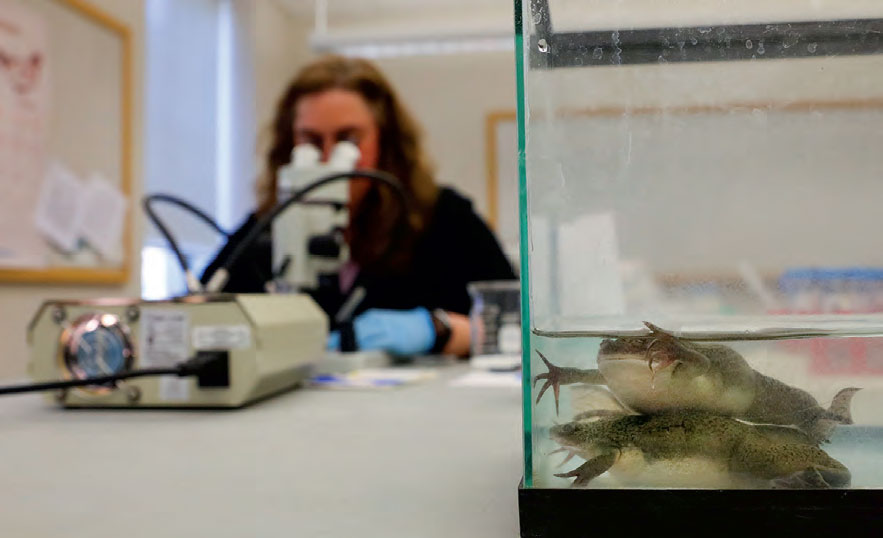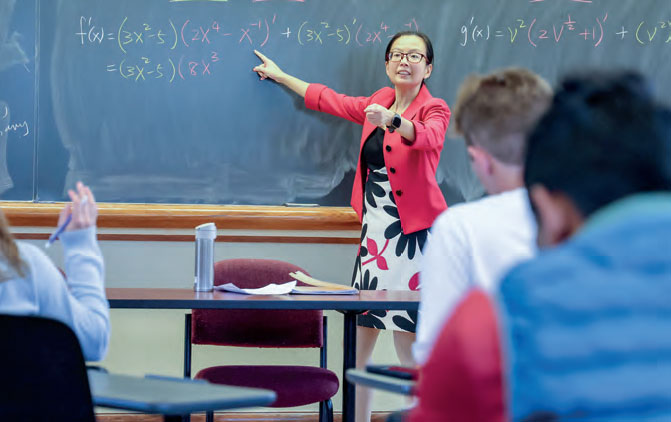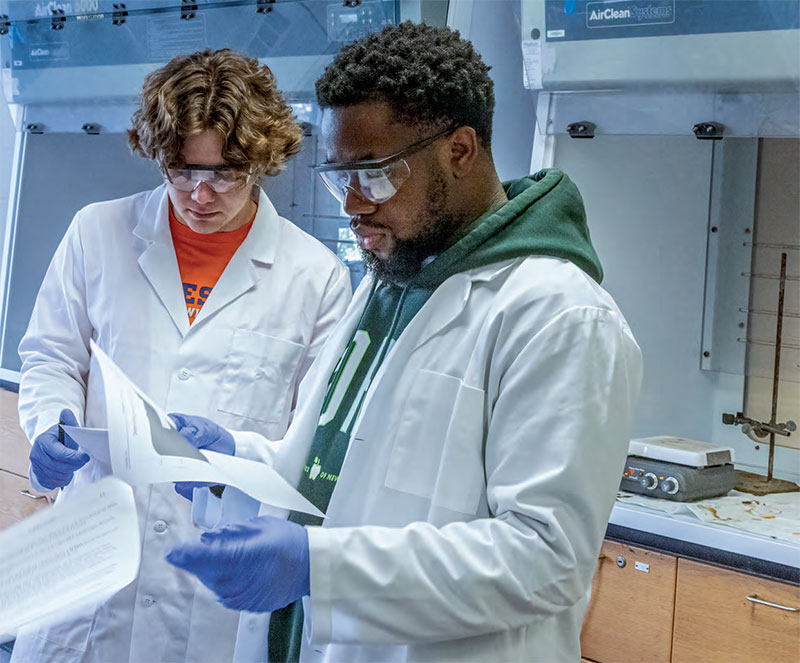The Pulteney StreetSurvey
Up Close and Personal: New Perspectives on STEM
Context matters.

Professor of Biology Kristy Kenyon analyzes frog embryos produced from an animal colony maintained in Eaton Hall. Kenyon and her students use African clawed frogs (X. laevis) to study questions of embryogenesis. Kenyon incorporates embryo experiments in biology courses as well as a bi-disciplinary class she teaches with Professor of Sociology Renee Monson. In “The Politics of Reproduction,” students conduct experiments with frog embryos generated through in vitro fertilization. These experiences create a unique learning environment for examining questions across biological, sociological and political perspectives — practicing science with “context to understand the complexity, and also the importance, of policy decisions,” Kenyon says. The goal is to inspire debate and dialogue among students with different academic backgrounds, interests and beliefs, resulting in “a much more tangible and meaningful learning experience [as they come] to understand how science impacts their daily lives in ways that they may not have experienced before.”
Data. Science. Insight.

Pictured here explaining key concepts during a calculus course, Associate Professor of Mathematics and Computer Science Yan Hao uses her mathematics expertise to explore important questions about everything from socio-economic networks to human health. Hao and Associate Professor of Psychological Science Daniel Graham teamed up on a study of mammal brains and the signals they use to communicate. Combining data science and neuropsychology, their research details routing strategies the brain employs to efficiently manage information, which are not dissimilar from some computer networks. The study — which informed Graham’s recent book, An Internet in Your Head: A New Paradigm for How the Brain Works — illustrates the vital insights that arise when age-old questions about human understanding are filtered through new technology and collaborative, interdisciplinary research. Graham writes about how the internet’s architecture illuminates the workings of our brains on his Psychology Today blog, “Your Internet Brain.”
Catalyzing reactions.

Aidan Vanek ’25 and Jadon Layne ’25 work through the process to determine the rate law for a catalyzed decomposition of hydrogen peroxide reaction. As a pre-med biochemistry major, Layne says that “research is an integral part of the journey.” The tools and skills he developed in the lab were crucial to his subsequent summer research at the Yale School of Medicine, but equally important was the mindset. He was “fully immersed in finding the answer to the specific question that we were asking” and “woke up every day thinking about how we could advance or look at our approach from a different perspective. I have been able to apply the foundational skills from lab…to the research I am doing with Professor Justin Miller.”
